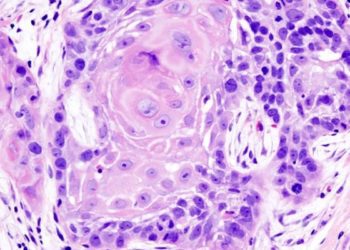2 Minute Medicine Rewind July 7, 2024
Web-Based Cognitive Behavioral Treatment for Bulimia Nervosa A Randomized Clinical Trial
1. Patients with bulimia nervosa randomized to receive web-based cognitive behavioural therapy (CBT) were observed to experience fewer bulimic episodes and binge-eating episodes compared to control, and may be a viable and more accessible alternative to in-person CBT.
Evidence Rating Level: 1 (Excellent)
Despite 1-2% of the global population being affected by bulimia nervosa (BN) during their lifetime, accessing evidence-based treatments can be difficult due to logistical barriers. Cognitive behavioural therapy (CBT) has been shown to be a viable intervention for BN. If barriers such as in-person meetings were reduced through web-based interventions, more patients could be treated in a timely manner. This randomized clinical trial compared a 12-week, web-based CBT intervention to no intervention. 154 individuals were blindly put into either group. Both groups had similar demographic characteristics and clinical baselines. The intervention group saw fewer bulimic episodes (p < 0.001). The control group did not see a reduction in bulimic episodes. Binge-eating episodes were also reduced in the intervention group (p <0.001). No changes in either group were seen regarding compensatory behaviours. Weekly symptom measurements were also lower in the intervention group when compared to the control group (p = 0.005). However, given the study only compared intervention to no intervention, less is known regarding the relative efficacy of web-based CBT compared to traditional treatment programs. As such, further research is required to determine whether or not web-based CBT would provide comparable efficacy to in-person programs. Nonetheless however, for patients with limited healthcare access, web-based CBT may be a viable option to improve outcomes for BN.
1. Incentivizing smoking cessation with financial rewards increased the likelihood of cessation through the first 12 weeks but did not increase cessation at 26 weeks.
Evidence Rating Level: 1 (Excellent)
Socioeconomically disadvantaged individuals are less likely to quit smoking. Contingency management uses positive reinforcement to promote drug and alcohol abstinence. Financial incentives could be used to promote smoking cessation in low socioeconomic status (SES) adults. This study aimed to compare long-term effects of low-cost financial incentives for smoking cessation relative to the usual care counseling and pharmacotherapy. Participants were randomly assigned to usual care (UC) or UC with financial incentive (FI). A baseline was taken, participants were to quit smoking 1 week after the baseline was taken and were followed up every 4 weeks for 26 weeks. UC consisted of tobacco treatment specialist counselling up to 6 weekly counseling sessions after the quit day. About 80% of participants were also given a combination of nicotine replacement therapy. The FI was the opportunity to earn $250 of department store gift cards. Incentives were awarded for self-reported abstinence over the past 7 days with a CO breath sample consistent with abstinence. Incentives started at $20 and increased by $5 every successive week of absence. Nonabstinent participants had the amount reset to $20 and would start again. Assignment to UC plus FI was associated with a greater likelihood of 7-day abstinence at the 4, 8, and 12-week follow-ups but not at 26 weeks. Participants in the UC plus FI group were significantly more likely to achieve PPA across assessments through 26 weeks. Overall, participants earned a mean of $72. Further research is required to determine the cost-benefit ratio of using financial incentives as a means to promote smoking cessation and reduce the costs of smoking on healthcare, and determine its viability in a societal setting.
1. Compared to the microconvex and echo probe, the linear probe is better for lung ultrasounds in neonates.
Evidence Rating Level: 2 (Good)
Lung ultrasound (LUS) is a powerful tool used in neonatal and pediatric intensive care units. LUS is often used to diagnose respiratory disorders and guide procedures sch as surfactant administration or chest tube placement. Unlike other ultrasound procedures such as echocardiography, the optimal probes have not been determined for LUS. This prospective, blinded, randomized study aimed to compare the performance of linear, microconvex, and echo (i.e., phased array) probes in neonate LUS. The primary outcome was the neonatologist performed lung ultrasound (NPLUS) score. One of three clinicians conducted the LUS using a standardized linear probe with a supplemental exam using either microconvex or echo probe (randomized). A randomly selected, expert evaluator blindly evaluated each patient. The linear probe had a higher NPLUS score relative to the echo and microconvex probe. These findings confirm the current recommendations to use a linear probe. The NPLUS scores were also correlated to clinical outcomes which validates its use as a diagnostic tool. A key limitation is the nature of a single-center study. The generalizability of the patients who were all hemodynamically stable could be problematic. Additionally, the results are very dependent on the clinician.
Associations between cardiovascular health and female infertility: A national population based study
1. Cardiovascular health and infertility are negatively correlated with physical activity, BMI, and blood glucose being major indicators of cardiovascular health that impact fertility
Evidence Rating Level: 2 (Good)
Female infertility affects around 10% of couples globally. There is emerging evidence that links female infertility with cardiovascular diseases (CVD) which suggests infertility could be a sign of CVD later in life. Elevated triglyceride levels and lower levels of high-density lipoproteins have been observed in females with idiopathic infertility. These are also markers of cardiovascular risk. The objective of this study was to determine the relationship between cardiovascular health and female infertility using data from the National Health and Nutrition Examination Survey (NHANES). 3,969 participants from NHANES were included based on availability of data regarding fertility and cardiovascular health. Infertility status was determined by questions within the Reproductive Health Questionnaire. Cardiovascular health was evaluated through the LE8 score which includes diet, physical activity, tobacco use, sleep, body mass index (BMI), lipid levels excluding high-density lipoprotein (HDL), blood glucose, and blood pressure. All models showed an inverse association between cardiovascular health score and infertility. For every 10-point increase in the LE8 score (scored 0-100), the odds of infertility dropped 7% after adjusting for covariates. Participants with moderate or high cardiovascular health had 24% and 41% lower odds of infertility respectively. The physical activity, body mass index, and blood glucose scores had significant negative association with infertility.Overall, study findings provide reasonable evidence that there is a link between cardiovascular health and fertility, and may be an important counselling point between practitioners and patients with regards to family planning.
1. Periodontitis has a strong association with Type 2 Diabetes and is exacerbated by poor glycemic control.
2. Type 1 Diabetes and periodontitis are only associated in patient subgroups with poor glycemic control
3. Periodontitis confers an increased risk for retinopathy and albuminuria in both Type 1 and Type 2 Diabetes.
Evidence Rating Level: 3 (Average)
Periodontitis is an oral disorder comprised of soft tissue inflammation, loss of periodontal attachment, and potentially tooth loss which affects about 10% of adults worldwide. Observational studies have linked periodontitis with type 2 diabetes (T2D) and show a potential link to diabetes-related complications. This retrospective study aimed to look at the association between diabetes and periodontitis on a population level using multiple Swedish national registers. The occurrence of periodontitis and tooth loss (registered extractions regardless of reason) were assessed. Periodontitis was defined if ≥3 teeth with probing depths of ≥6 mm were determined by dental professionals. Hemoglobin A1c levels were used to describe glycemic control. Periodontitis was more common in T1D and T2D than in the control groups. There was a higher association between periodontitis and T2D. Poor glycemic control was associated with an increase in risk of periodontitis by up to 67% in T1D and up to 172% in T2D. Participants with good glycemic control had lower risk of periodontitis in T1D but not T2D. Glycemic control was also associated with risk for tooth loss in T1D and T2D. Overall, there is an association between T2D and periodontitis which is stronger at a younger age and is exacerbated by poor glycemic control. T1D only confers an additional risk of periodontitis in patients with poor glycemic control. Periodontitis was also correlated with diabetes-related complications including retinopathy and nephropathy (albuminuria) but not major events ischemic events such as ischemic heart disease and stroke.
Image: PD
©2024 2 Minute Medicine, Inc. All rights reserved. No works may be reproduced without expressed written consent from 2 Minute Medicine, Inc. Inquire about licensing here. No article should be construed as medical advice and is not intended as such by the authors or by 2 Minute Medicine, Inc.







